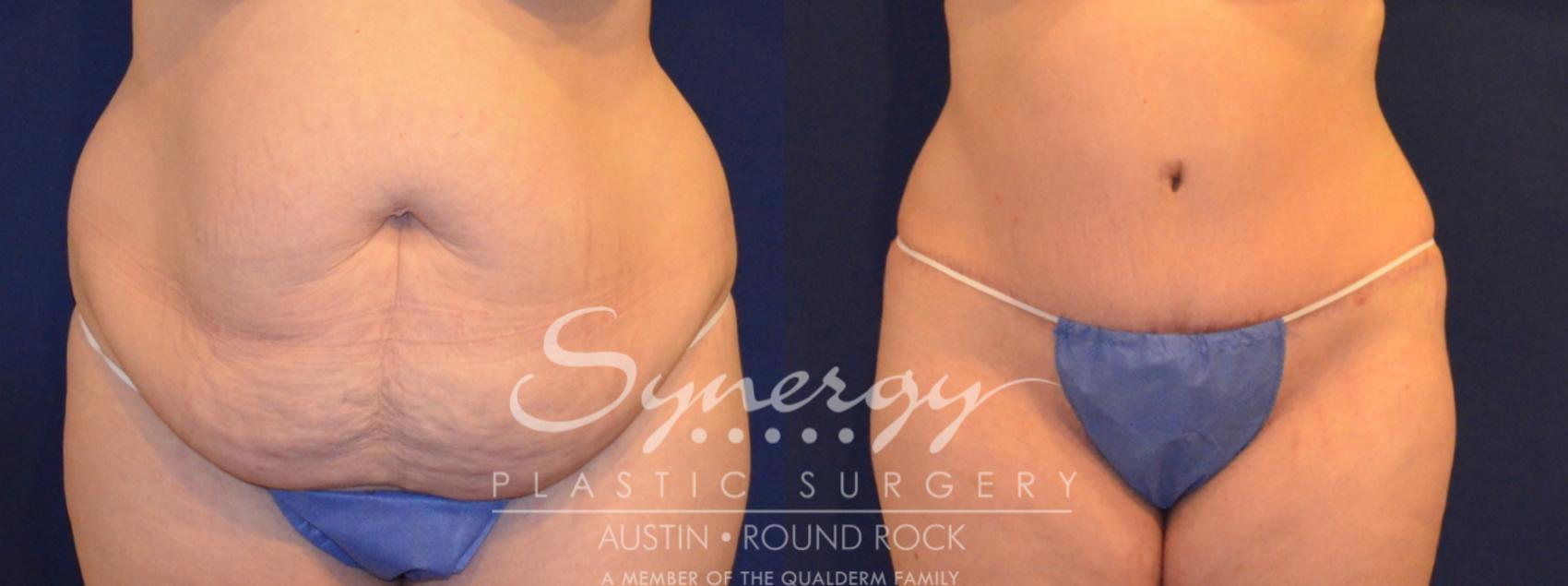One of the most common questions we hear from patients considering a tummy tuck at our Austin practice is whether they may be good candidates for a mini tummy tuck. That’s why we decided to explain in this blog post the differences between a mini and full tummy tuck and why — in most cases — we recommend getting a full tummy tuck.
What Is the Difference Between a Full and Mini Tummy Tuck?
The difference between a mini tummy tuck and a full tummy tuck can be confusing. While most people think the term “mini” simply implies a shorter incision, the medical definition of a mini tummy tuck refers to removing some skin in the lower abdomen without an incision around the belly button or tightening the muscles above the belly button.
Mini Tummy Tuck Before and After Photos
Full Tummy Tuck Before and After Photos
What Does a Mini Tummy Tuck Include?
Patients often want a mini tummy tuck because it requires a smaller incision and is a less involved surgical procedure than a full tummy tuck. But, as we’ve said, it’s not right for everyone. When examining patients during a tummy tuck consultation, specific physical conditions indicate if someone can benefit from a mini tuck. Those include:
- Minimal excess skin below the belly button
- Little excess fat
- A low body mass index (BMI)
- Intact abdominal muscles
A good candidate for a mini tummy tuck demonstrates all of these physical traits.
What Happens During a Mini Tummy Tuck?
A mini tummy tuck incision is limited to a short, horizontal line as low as possible on the abdomen. A full tummy tuck incision extends from one hip to the other. After making the incision, the surgeon pulls down the abdominal skin and removes the excess. In many cases, we use liposuction to sculpt the area and ensure a smooth contour. At that point, the surgeon closes the incision.
Why Most Patients Get Full Tummy Tucks
As you can probably guess, most patients we see in Austin are better suited for a full tummy tuck. A full tummy tuck accomplishes certain goals that a mini version of the procedure can’t match. A full tummy tuck usually tightens abdominal muscles and repositions the belly button, in addition to removing extra skin and fat. This is typically more appropriate for heavier patients.
BMI is important to consider because heavier patients have an increased risk of complications, often related to wound healing and other medical problems. We may advise a patient to lose weight before getting a tummy tuck to enhance the operation’s safety and limit the risk of postoperative problems.
Finally, women considering a tummy tuck after having children often have stretched abdominal muscles. This condition, called diastasis recti, usually causes a “belly pooch” that can’t be corrected with exercise — or with a mini tummy tuck. A full tummy tuck tightens these muscles as part of the procedure.
Take the Next Step
If you’re self-conscious about the appearance of your abdomen after having children or weight loss, one of our board-certified plastic surgeons can discuss your options and determine if you’re a good candidate for a mini or full tummy tuck. Request a consultation using the online form or call us at (512) 244-1439. We have locations in Austin and Round Rock, TX.
Updated December 2024










Leave a Reply